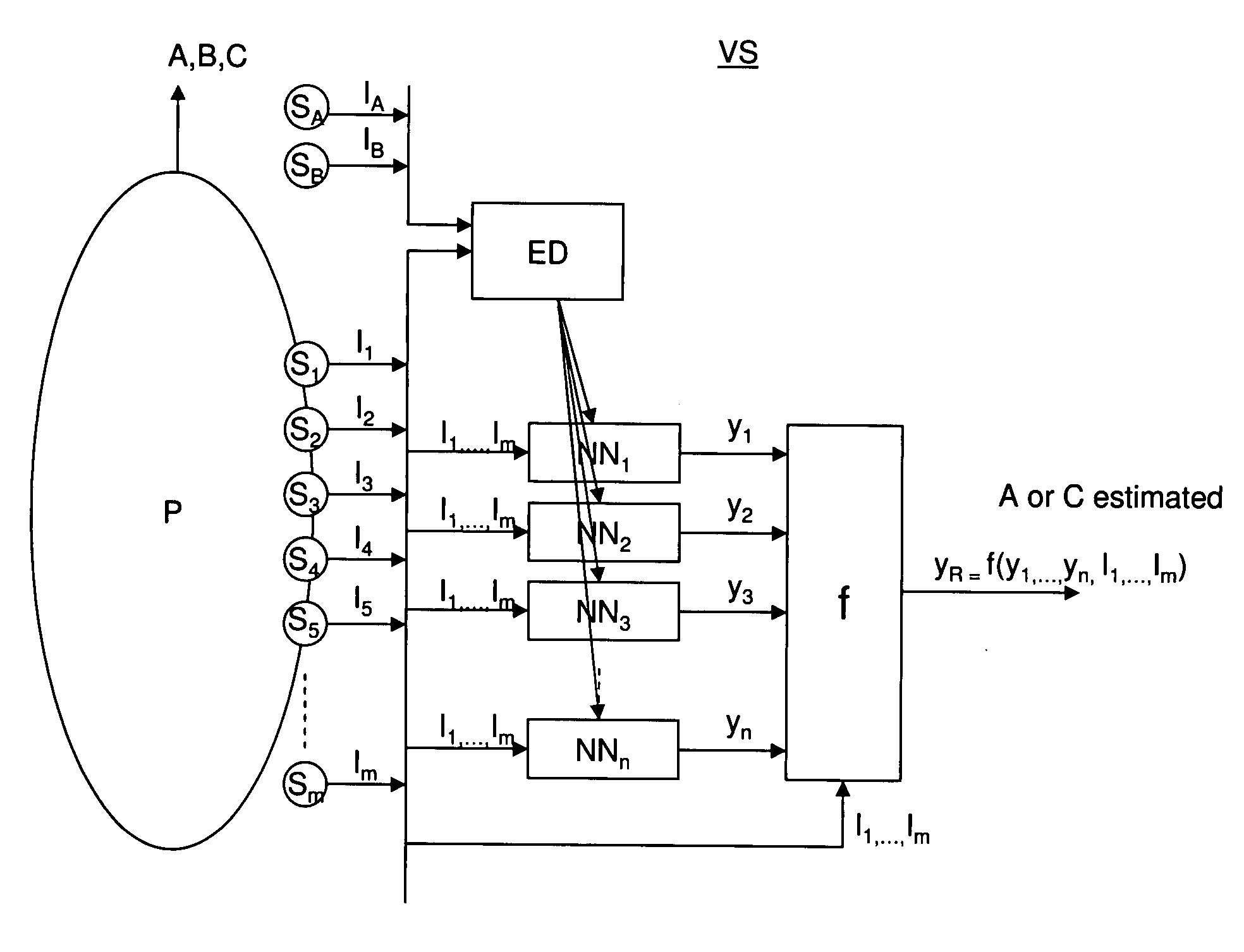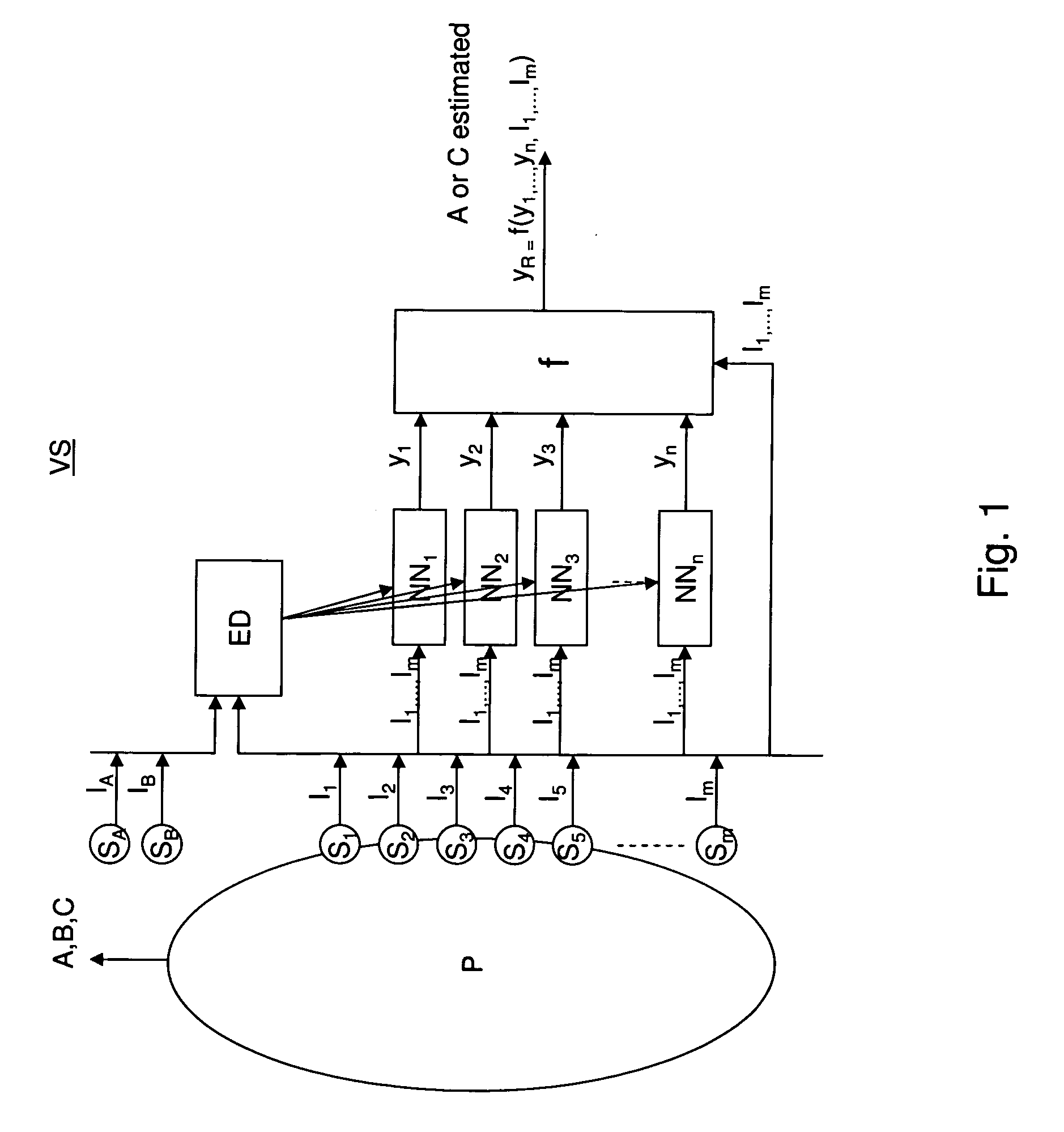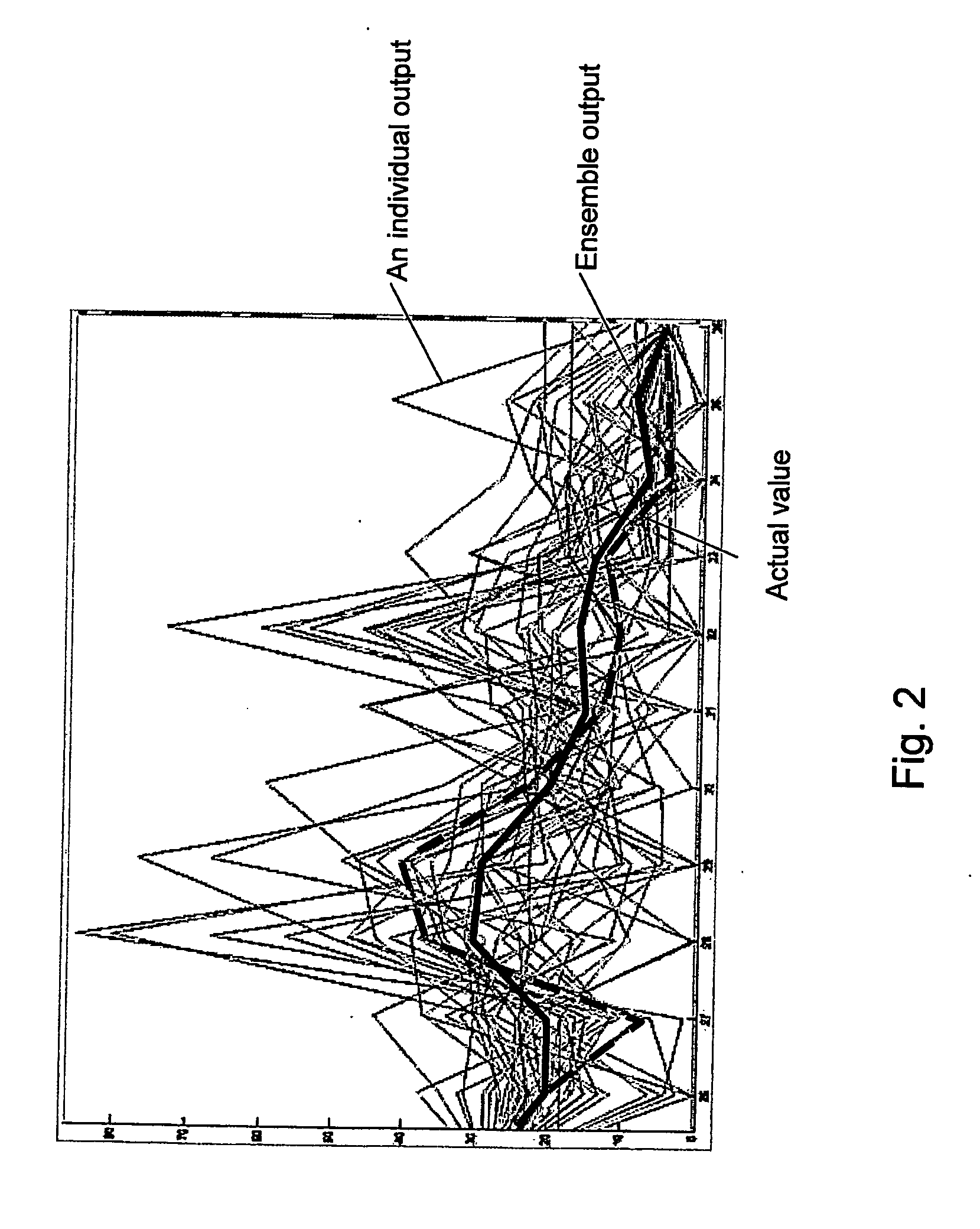System and method for empirical ensemble- based virtual sensing
a virtual sensing and ensemble technology, applied in adaptive control, process and machine control, instruments, etc., to achieve the effect of improving the accuracy of the virtual sensor system according to the invention, avoiding extra work handling special cases, and being easy to implemen
- Summary
- Abstract
- Description
- Claims
- Application Information
AI Technical Summary
Benefits of technology
Problems solved by technology
Method used
Image
Examples
Embodiment Construction
[0077]FIG. 1 is a block diagram of an embodiment of a virtual sensor system used to measure the amount (A,B,C) resulting from a process (P) according to the present invention.
[0078]In an embodiment the present invention the ensemble based virtual sensor system (VS) comprises two or more empirical models (NN1, NN2, . . . , NNn) where each of the empirical models (NN1, NN2, . . . , NNn) are arranged for estimating an intermediate result, and a combination function (f) is arranged for combining the intermediate results from the empirical models (NN1, NN2, . . . , NNn) to provide an estimation of the value that is more accurate than the signal output value (y1, y2, . . . , yn) from each of the individual empirical models (NN1, NN2 , . . . , NNn).
[0079]More specifically, in this embodiment of the invention each of the empirical models (NN1, NN2, . . . , NNn) are arranged for being trained using empirical data (ED). In an embodiment of the invention the empirical data are historical measu...
PUM
 Login to View More
Login to View More Abstract
Description
Claims
Application Information
 Login to View More
Login to View More - R&D
- Intellectual Property
- Life Sciences
- Materials
- Tech Scout
- Unparalleled Data Quality
- Higher Quality Content
- 60% Fewer Hallucinations
Browse by: Latest US Patents, China's latest patents, Technical Efficacy Thesaurus, Application Domain, Technology Topic, Popular Technical Reports.
© 2025 PatSnap. All rights reserved.Legal|Privacy policy|Modern Slavery Act Transparency Statement|Sitemap|About US| Contact US: help@patsnap.com



